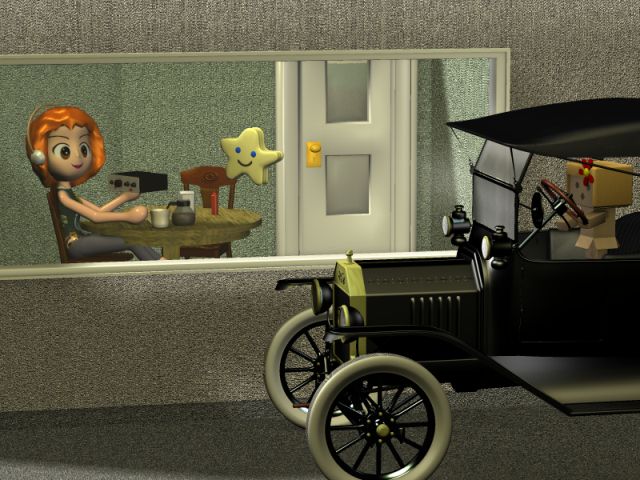Saturday, September 19, 2015
Regeneration 2
Part 2 of a series. Part 1 here, part 3 here.
After using the MFJ regenerative receiver for a week, I'm getting the experience I wanted. The nerdy bucket-list desire of building and understanding regen.
The regen control isn't just a 'booster'. Turning it changes the frequency of an internal oscillation, up to a point where it simply covers everything with a 16kc (or so) hiss. You can use the regen control to boost an AM signal, or you can use it to add a tone to CW or SSB. The regen setting constantly interacts with the main tuning, so you can't just leave it alone. Tuning is an active procedure.
Sudden realization: This partly achieves another bucketlist item, one that I abandoned when frugality and reality took over. I had wanted to try driving a Model T, mainly to get the feel of the interaction of throttle and spark. I already know how a manual choke feels; I've owned and driven many cars with manual chokes; but I've never driven a car without vacuum spark advance.
 It's a close parallel. From what I've read, the T's spark control is equally 'active'. You can't just set it and forget it. There is a prescribed default for each click of the throttle lever, just as the regen has a default setting for each band. But you can get different types of performance, adapt to altitude or fuel quality, by twiddling the spark.
When regens were replaced by superhets, the 'activity' went away, which most listeners appreciated; but we also lost the ability to adjust intelligently for different types of signals.
When manual spark was replaced by vacuum and/or centrifugal advance, the 'activity' went away, which most drivers appreciated; but we also lost the ability to adjust intelligently for different situations.
It's a close parallel. From what I've read, the T's spark control is equally 'active'. You can't just set it and forget it. There is a prescribed default for each click of the throttle lever, just as the regen has a default setting for each band. But you can get different types of performance, adapt to altitude or fuel quality, by twiddling the spark.
When regens were replaced by superhets, the 'activity' went away, which most listeners appreciated; but we also lost the ability to adjust intelligently for different types of signals.
When manual spark was replaced by vacuum and/or centrifugal advance, the 'activity' went away, which most drivers appreciated; but we also lost the ability to adjust intelligently for different situations.
 It's a close parallel. From what I've read, the T's spark control is equally 'active'. You can't just set it and forget it. There is a prescribed default for each click of the throttle lever, just as the regen has a default setting for each band. But you can get different types of performance, adapt to altitude or fuel quality, by twiddling the spark.
When regens were replaced by superhets, the 'activity' went away, which most listeners appreciated; but we also lost the ability to adjust intelligently for different types of signals.
When manual spark was replaced by vacuum and/or centrifugal advance, the 'activity' went away, which most drivers appreciated; but we also lost the ability to adjust intelligently for different situations.
It's a close parallel. From what I've read, the T's spark control is equally 'active'. You can't just set it and forget it. There is a prescribed default for each click of the throttle lever, just as the regen has a default setting for each band. But you can get different types of performance, adapt to altitude or fuel quality, by twiddling the spark.
When regens were replaced by superhets, the 'activity' went away, which most listeners appreciated; but we also lost the ability to adjust intelligently for different types of signals.
When manual spark was replaced by vacuum and/or centrifugal advance, the 'activity' went away, which most drivers appreciated; but we also lost the ability to adjust intelligently for different situations.Labels: coot-proofing, Danbo, defensible spaces, Make or break, new toy
